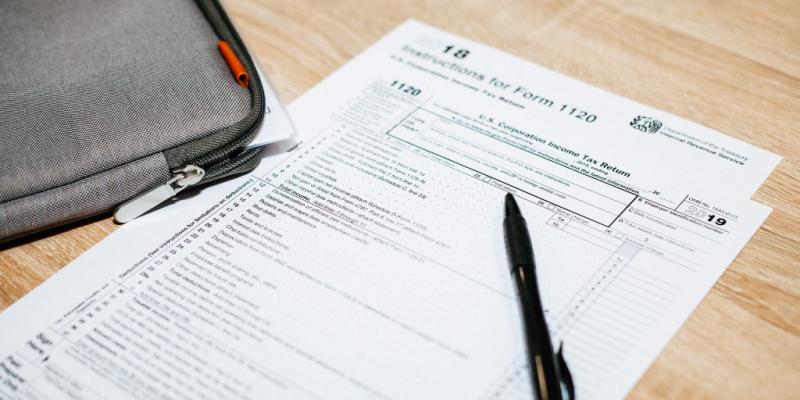AI Legal Brief Writing: How Technology Is Changing the Game

Picture this: you’re facing a legal issue, and your lawyer hands you a perfectly crafted legal brief, polished and persuasive, in record time. Sounds like magic, right? Well, it’s not—it’s AI legal brief writing at work. If you have been following news on AI, you must know that AI technology is shaking up the way legal documents are created, making the process faster, more efficient, and sometimes even more accurate. But what exactly is AI legal brief writing, and why should you care? Whether you’re curious about how your lawyer gets those documents done or wondering if AI could help with your own legal needs, this article dives deep into the world of AI-powered legal briefs. Let’s break it down together.
What Is AI Legal Brief Writing?
AI legal brief writing is when artificial intelligence tools help create, edit, or analyze legal briefs—those critical documents lawyers use to argue cases in court. Think of a legal brief as a lawyer’s game plan: it lays out arguments, cites laws, and backs everything up with evidence. Writing one from scratch can take hours, even days, because it demands precision, research, and a knack for persuasion. That’s where AI steps in, acting like a super-smart assistant who can draft, research, and polish faster than any human.
These tools use something called natural language processing, which is a fancy way of saying they understand and generate human-like text. They’re trained on massive amounts of legal data—think court cases, statutes, and past briefs—so they can churn out drafts that sound like they came from a seasoned attorney. Some tools even check citations or suggest stronger arguments. But don’t worry, it’s not about robots taking over the courtroom. Lawyers still call the shots, using AI to save time and boost their work.
Why does this matter to you? If you’ve ever hired a lawyer, you know legal fees can add up fast. AI can cut down on the time it takes to produce a brief, which might mean lower costs. Plus, it can make legal services more accessible for folks who don’t have deep pockets. Imagine getting a solid brief for a small claims case without breaking the bank—AI is making that more possible.
How AI Legal Brief Writing Works

So, how does AI pull off this legal wizardry? It’s not just typing out words and hoping for the best. AI legal brief writing tools are like digital power tools, each designed for specific tasks. Let’s walk through the process so you can see what’s happening behind the scenes.
Researching Like a Pro
First up, AI is a research superstar. Legal briefs need to reference laws, past cases, and regulations, and finding the right ones is like searching for a needle in a haystack. AI tools can scan thousands of legal documents in seconds, pulling out relevant cases or statutes that match your case. For example, if you’re suing over a faulty product, AI can find court rulings on similar product liability cases faster than your lawyer could flip through a law book. This speed means your brief is built on a solid foundation of up-to-date legal knowledge.
Drafting the First Version
Once the research is done, AI gets to work drafting. You give it some basic info—like the type of case, key facts, or the court you’re filing in—and it generates a rough draft. This isn’t just a random jumble of words. The AI organizes arguments logically, includes proper legal formatting, and even cites sources. It’s like having a first-year law associate who never sleeps and doesn’t need coffee breaks. The draft might not be perfect, but it gives lawyers a head start, saving hours of staring at a blank page.
Editing and Polishing
AI doesn’t stop at drafting. Many tools act like a built-in editor, catching typos, suggesting clearer phrasing, or flagging weak arguments. Some even analyze the tone to make sure it’s persuasive without being too aggressive. Ever read a legal document and thought, “This is way too wordy”? AI can trim the fat, making briefs concise and punchy. It can also check citations to ensure they’re accurate, which is a big deal—citing a fake case could get a lawyer in hot water.
Checking for Accuracy
Here’s where things get really cool: some AI tools can fact-check. They cross-reference your brief against legal databases to make sure every case or law you’ve cited is real and still valid. This is huge because even the best lawyers can miss a detail, and mistakes in a brief can hurt your case. AI acts like a safety net, catching errors before they reach the judge.
The catch? AI isn’t flawless. It can sometimes misinterpret nuanced legal issues or pull outdated info if it’s not connected to the latest databases. That’s why human lawyers are still essential—they review and tweak the AI’s work to ensure it’s spot-on. Think of AI as the sous-chef prepping the meal, while the lawyer is the head chef adding the final seasoning.
Benefits of AI Legal Brief Writing
Now that you know how it works, let’s talk about why AI legal brief writing is such a game-changer. It’s not just about fancy tech—it’s about real, practical advantages that can make a difference in your legal journey.
Saving Time and Money
Time is money, especially in the legal world. Writing a brief the old-fashioned way can take 20 hours or more, racking up billable hours. AI can slash that time by automating research, drafting, and editing. For you, that could mean lower legal fees or faster turnaround on your case. For example, a small business owner fighting a contract dispute might get a brief drafted in a day instead of a week, keeping costs down and the case moving.
Boosting Accuracy
Nobody wants a brief full of errors. AI’s ability to check citations and catch typos makes briefs more reliable. This is especially important in high-stakes cases, like a personal injury lawsuit, where a single wrong citation could weaken your argument. With AI, your lawyer can focus on strategy instead of sweating the small stuff.
Making Legal Help More Accessible
Not everyone can afford a top-tier lawyer, but AI is leveling the playing field. Some tools are designed for solo practitioners or small firms, letting them produce high-quality briefs without a big budget. There are even platforms that let non-lawyers generate basic legal documents for simple cases, like a landlord-tenant dispute. While you should always consult a lawyer for serious matters, AI is opening doors for people who might otherwise struggle to navigate the legal system.
Helping Lawyers Shine
AI isn’t just about efficiency—it can make your lawyer’s work better. By handling repetitive tasks, AI frees up time for attorneys to focus on crafting compelling arguments or meeting with you to discuss your case. It’s like giving your lawyer a superpower, letting them deliver top-notch briefs without burning out.
Of course, it’s not all sunshine and rainbows. AI can sometimes produce generic drafts that lack the creative spark of a human lawyer, such as an experienced family law attorney. And if the tool isn’t trained on the latest laws, it might miss critical updates. But when used right, the benefits far outweigh the drawbacks.
Best AI Tools for Legal Brief Writing

Wondering what tools are out there? The market is buzzing with options, each with its own strengths. Here’s a look at some of the big players in AI legal brief writing, so you can get a sense of what’s available.
Clearbrief: The Citation Wizard
Clearbrief is a favorite for lawyers who want to nail their citations. It plugs right into Microsoft Word, letting you write as usual while it checks your citations against legal databases. If you mention a case, Clearbrief can confirm it’s real and even hyperlink it for easy access. It also suggests evidence from your case files to back up your arguments. For example, if you’re writing a brief about a car accident, Clearbrief might pull relevant details from police reports to strengthen your case. It’s like having a fact-checking assistant who never misses a beat.
BriefCatch: The Writing Coach
Created by legal writing expert Ross Guberman, BriefCatch is all about making your brief persuasive and polished. It analyzes your draft in real-time, offering tips on clarity, flow, and tone. If your brief sounds too stiff or jargon-heavy, BriefCatch suggests ways 1. It’s like having a writing coach whispering in your ear, helping you craft briefs that judges actually enjoy reading. Plus, it’s got a cool feature that helps with Bluebooking—those fiddly citation rules that drive lawyers nuts.
Paxton AI: The All-Rounder
Paxton AI is a powerhouse for both research and drafting. It can dig through legal databases, draft full briefs, and even suggest strategies based on past case outcomes. If you’re a lawyer juggling multiple cases, Paxton can churn out a solid first draft while you focus on client meetings. It’s especially handy for complex cases, like intellectual property disputes, where you need to cite a ton of technical laws and cases.
Bloomberg Law: The Research Heavyweight
Bloomberg Law isn’t just for brief writing—it’s a full-on legal research platform with AI-powered tools. Its Brief Analyzer can dissect your opponent’s brief, spotting weak points you can attack. It also sifts through court opinions in seconds, pulling out key details to bolster your arguments. If you’re up against a tight deadline, Bloomberg Law’s speed and depth can be a lifesaver.
These are just a few examples, but the list keeps growing. Tools like Spellbook, TypeLaw, and Lexis+ AI are also making waves, each with unique features. The best one depends on your needs—whether you want help with research, drafting, or editing.
Things to Watch Out For
Before you get too excited, let’s talk about the flip side. AI legal brief writing is awesome, but it’s not perfect. Here are a few things to keep in mind to avoid headaches.
AI Can Make Mistakes
AI is smart, but it’s not human. It can “hallucinate,” meaning it might invent fake cases or misinterpret a law. In 2023, a New York lawyer got in trouble for submitting a brief with made-up citations from ChatGPT. Yikes! Always have a lawyer double-check AI-generated briefs to catch these slip-ups. It’s like using a calculator—you still need to make sure the math adds up.
Not All Tools Are Equal
Some AI tools are better than others. Generic platforms like ChatGPT might not have the legal know-how or up-to-date data you need. Stick to specialized legal AI tools like Clearbrief or Paxton, which are built for the courtroom, not casual chats. Also, check if the tool complies with data privacy rules—your case details are sensitive, and you don’t want them floating around the internet.
Courts Have Rules
Some courts are strict about AI use. They might require your lawyer to certify that a human reviewed the brief or disclose that AI was used. If your lawyer skips this step, it could cause drama. Make sure they know the court’s stance on AI to keep everything above board.
It’s a Tool, Not a Lawyer
AI can’t replace the human touch. It’s great for drafts and research, but it might miss the emotional or strategic nuances that win cases. For example, a brief for a custody battle needs a human’s empathy to hit the right tone. Use AI to do the heavy lifting, but let your lawyer add the heart and soul.
Being aware of these pitfalls means you can use AI legal brief writing safely and effectively. It’s all about teamwork—AI and humans working together to get the best results.
How to Get Started with AI Legal Brief Writing
Ready to give AI a spin? Whether you’re a lawyer or someone hiring one, here’s how to dip your toes into AI legal brief writing without diving in headfirst.
If you’re a client, ask your lawyer if they use AI tools. Many firms are already on board, especially smaller ones looking to compete with the big dogs. If they don’t, suggest they check out tools like BriefCatch or Clearbrief—most offer free trials. You could even ask how AI might lower your costs or speed up your case. Just don’t push too hard; some lawyers are old-school and prefer doing things manually.
If you’re a lawyer or handling your own legal stuff, start small. Pick one tool and play around with it on a low-stakes project, like a demand letter or a simple motion. Most platforms have tutorials or demos to get you going. You can also join online forums or webinars to learn from other lawyers using AI. It’s like learning to ride a bike—start with training wheels before racing downhill.
One last tip: always, always review the AI’s work. Treat it like a first draft, not a final product. Run it by a colleague or double-check citations yourself. This extra step ensures your brief is ready for prime time.
Wrapping It Up
According to legal experts who write for us on law, AI legal brief writing is like having a turbo-charged assistant who never sleeps. It’s transforming how briefs are made, saving time, cutting costs, and helping lawyers deliver better work. Whether you’re fighting a legal battle or just curious about the tech, understanding AI’s role can give you an edge. It’s not about replacing lawyers—it’s about making them even better at what they do.
So, next time you hear about a legal brief, you’ll know there’s probably some AI magic behind it. Pretty cool, right? If you’re ready to see it in action, talk to your lawyer or explore a tool yourself. The future of legal writing is here, and it’s moving fast.
More to Read:
Previous Posts:







